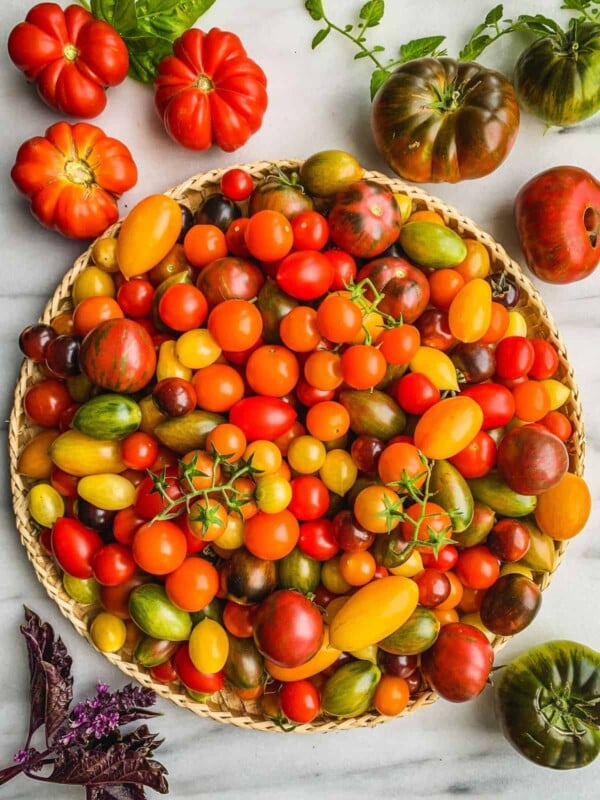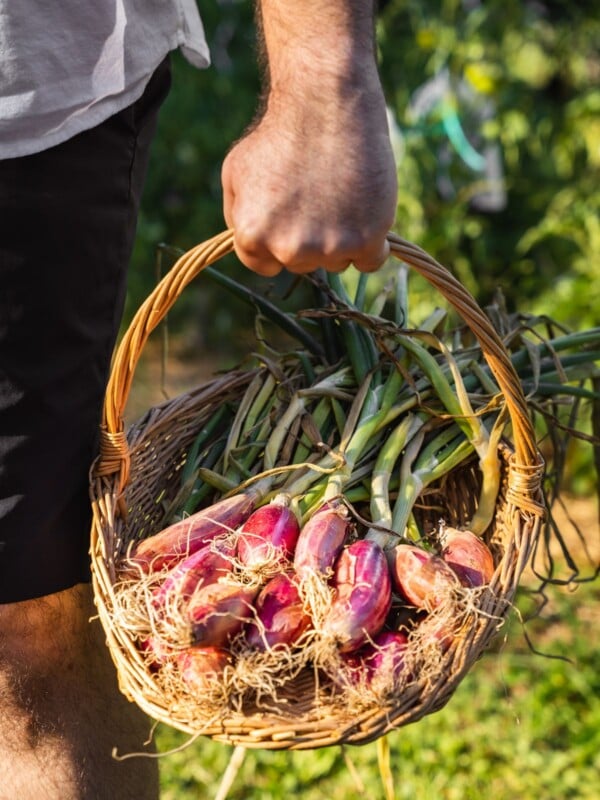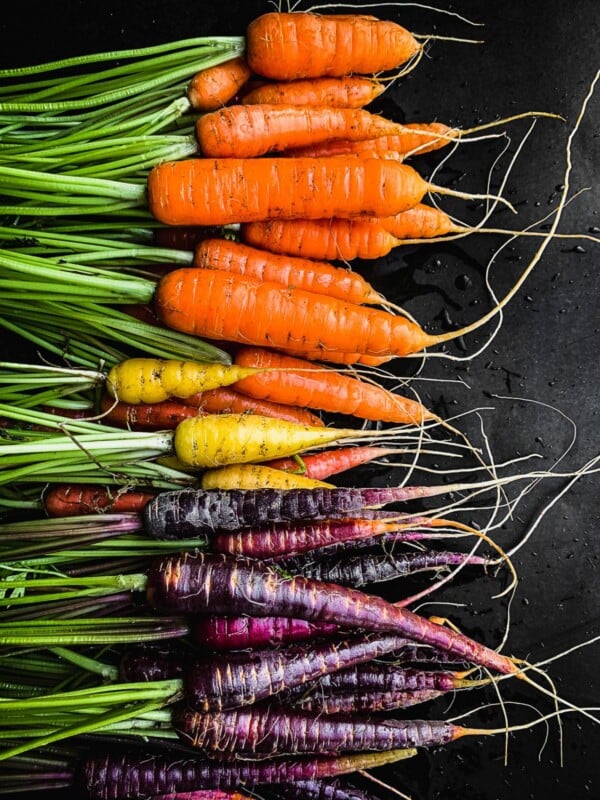Grow more food! Maximize your harvests with different types of containers and in unusual locations and configurations.

If you have been following me for a while, you know that I am a big fan of growing food and flowers in containers. I’m going to explain to you how I maximize my harvests. My postage-stamp sized urban backyard can only fit so much. In fact, it is a dual purpose space. An entertaining and lounging space as well as a food growing space. I planned out the space carefully and meticulously. Rather than growing food right in the ground, I built cedar raised beds that are both functional and beautiful. The space needed to be inviting and not look messy or neglected.
The first year, I had a modest garden and was quite content with my raised beds. However, as my food growing hobby turned into a full blown obsession, I needed more space. Ripping up the patio was out of the question of course. The solution was to use containers to increase food growing capacity.
Table of Contents
Growing in containers
What constitutes a container? It could be a plastic pot, a half whiskey barrel, a terracotta pot, a grow bag, or a window box. They can be cheap and cheerful or expensive and grandiose. I personally prefer cheap and cheerful and have sourced many of my containers from the dollar store. No shame in admitting that. In fact, I find the dollar store to be one of the best placed to buy garden supplies like twine, bamboo stakes, decorative items and of course planters.
A few notes about growing in pots:
- Pots/containers tend to dry out quickly, especially on really warm days, and will require frequent watering.
- Many of the pots/containers you purchase from the hardware store, garden center or even the dollar store will NOT have drainage holes. You will need to drill drainage holes. Many people will claim that placing rocks at the bottom of a container with no drainage holes is sufficient to ensure the roots do not rot. That is very bad advice. Don’t underestimate the importance of drainage holes.
- Size matters. Smaller pots (1-3 gallon) are adequate for herbs or shallow rooted vegetables like lettuce. Medium pots (5-10 gallon) will support peppers and tomatoes. Lager pots (15+ gallons) will allow you to grow large cabbages, multiple peppers or even dahlias. When in doubt, larger is better when it comes to containers. Make sure to also check out my 17 best tomatoes for container gardening post.
- Plastic pots marketed for gardening purposes will usually be made with a food grade plastic like HDPE, LDPE, or PP. But it is a good idea to check regardless and make sure the plastic is food safe.
There some plants that I will exclusively grow in containers. I have had great success growing peppers and eggplants in containers. Whenever I plant them in ground, they tend to perform poorly. Your mileage may vary of course.
Growing in Unusual Places
2020 will go down in history. When the pandemic hit and people began hoarding food and necessities, I reassessed my 2020 garden goals. I decided that I needed to pivot and focus more on food than on flowers. Then I got the news! The allotments were closed until further notice. This changed everything. All the seed starting and garden plans were out the window. With no end in sight for the plot closures, I had to find creating ways (and placed) to grow food at home.
I have a flat roof above my porch that is accessible by a second floor window. DING! Why not place a bunch of containers and grow food on the roof!?! That’s exactly what I did to maximize my harvests. I placed several window box containers and transplanted them with lettuce. They required frequent watering, but the results were definitely worth it. Disclaimer: Safety first.

They say that necessity is the mother of invention. I had a need and found a way to address it. Think outside the box and you might find new and innovative ways to grow food.
Growing in Unusual Containers
Why limit yourself to standard planters and containers from the garden center? This year, I took it upon myself to use what I had on hand rather than go out and spend money.
I had a stack of grocery store bins that were a free gift with purchase. I was not using them and they just sat in the garage collecting dust. DING! Why now drill a few holes and use them to grow food!?! After checking that they were indeed made with food grade plastic, I drilled a few drainage holes in each and filled them with potting soil. I used them to grow radish, lettuce, herbs and flowers.
Other unusual containers: Old chest drawers, milk jugs, kitty litter jugs, garbage bins, shoe organizers, and storage totes. I am currently growing carrots in deep storage totes on my patio.
Growing Vertically
When you’ve used up every square inch of space and want to maximize your harvests, it’s time to look up! Growing vertically has many benefits.
- Saves precious space, especially if you don’t have much of it to begin with
- Less pest pressure
- Less disease pressure
Rain Gutter System
One way to take advantage of vertical growing is b using rain gutters. I attached galvanized steel rain gutters to my west facing fence and made sure they were braced and attached properly so that they didn’t buckle under the weight of wet soil. I filled them with a light and airy potting soil. They are used to grow radishes in the spring/fall and bush beans in the summer.
Because they are only 5 inches tall, I can only grow shallow rooted crops in them. Other crops that will work in rain gutters: lettuce, annual herbs, arugula, baby kale/mustard and strawberries.
Note: they dry up really quickly and may require watering multiple times a day. I have drip irrigation hooked up to the gutter system which makes this way of growing food easy and stress free.
Trellises
My favorite way to grow vining cucurbits (winter squash, cucumbers, melons) is vertically on a trellis. This can be a purchased metal or wood trellis, a couple of poles with netting, garden arch/cattle panel or a DIY structure. The goal is to guide the plants upwards and off the ground, liberating precious growing space below.
My favorite material to build DIY trellises from are framing strips available at any hardware store.
Additionally, trellises can also be added to containers to grow vining crops vertically.

I hope this motivates you to find interesting and unique ways to grow your own food and maximize your harvests.











